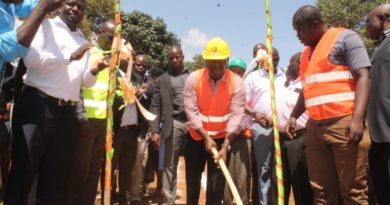Conclusion of Demonitisation Exercise
The Central Bank of Kenya (CBK) is pleased to announce the successful completion of the withdrawal (demonetisation) of the older series KSh.1,000 notes. The exercise, announced on June 1, 2019, was aimed at addressing the grave concern of illicit financial flows, and the emerging risk of counterfeits.
From a total of 217,047,000 pieces of the KSh 1,000 notes on June 1, CBK had received 209,661,000 pieces at the end of the demonetisation period on September 30. Thus, 7,386,000 pieces of the older KSh.1,000 notes, worth KSh.7.386 billion, were rendered worthless at the end of demonetisation. A significant proportion of this amount would represent cash that was held by individuals who were unable or unwilling to subject themselves to the robust checks in place.
The demonetisation exercise had little impact on the economy—inflation, exchange rate, etc. There was little evidence of a rush to purchase high-value assets in cash. The demonetisation process was underpinned by:
- A robust anti-money laundering and combating the financing of terrorism (AML/CFT) framework. Financial institutions employed AML/CFT checks to all transactions, and CBK closely monitored compliance. During the period, 3,172 suspicious transactions were flagged and are being investigated. CBK also carried out 15 targeted on-site inspections.
- A sustained, intensive and targeted public awareness campaign. The intention was for Kenyans to familiarise themselves with the features of the banknotes, and to sustain awareness of the September 30 deadline for the withdrawal of the older KSh.1000 banknotes. To ensure that the public was aware of the currency, as well as the deadline, CBK ran more than 15,000 advertisements on radio, television and print media, as well as intense, two-way engagement on social media. CBK teams, including Governor Dr. Patrick Njoroge, engaged with wananchi in every part of the country, and material was distributed to all public schools and through the Government Administration in every county.
- Close monitoring, which allowed for quick response as and when required. CBK sought to ensure that any concerns on the demonetisation process were addressed in a timely manner.
During the period, Kenyans largely exchanged their banknotes in smaller amounts. In value terms,
- 62 percent of transactions were under KSh.500,000
- 79 percent of transactions were under KSh.1,000,000
- 2 percent of transactions were under KSh.2,000,000 In terms of number of transactions,
- 96 percent of transactions were under KSh.500,000
- 99 percent of transactions were under KSh.1,000,000
Looking forward, investigations will continue based on information from this process and the robust AML/CFT checks will remain entrenched in the financial institutions.


